Google: recommendations for apps on Google Play
The theme of applications is one of the most talked about and “trendy”, and the theme of the feature and success of an application in one way or another is the most discussed subtopic in it.
The Secrets to App Success on Google Play guide was published the other day, which, if translated almost literally, will help your application or game to become successful on Google Play (by the way, you can download a book from Google Play ).
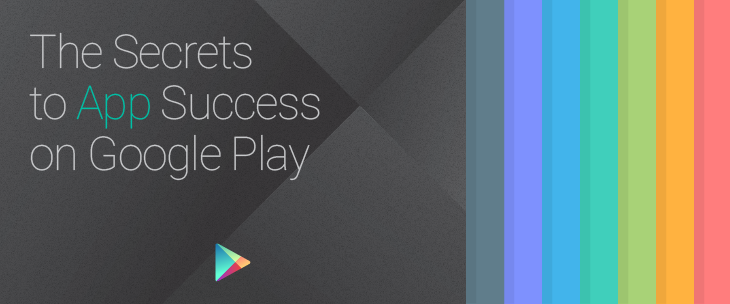
')
Someone will think that this, of course, is great, but is unlikely to become a magic wand for the application. Definitely in the manual there are tips that may be interesting and useful for novice developers writing not only for Android, but also for iOS, Windows or for the Amazon store, etc. Developers who are not the first year in the industry will be able to find recommendations for themselves that apply specifically to Google Play.
Each developer chooses for himself in which stor and in what time frame to publish the application. But, you see, everyone needs some input to make a decision. According to a recent study by Vision Mobile ( Developer Economics Q3 2014: State of the Developer Nation ), the number of platforms that developers are targeting decreases on average and is 2.2 (previously 2.9), so the choice of platform and storage becomes an increasingly balanced decision.
The facts about Google Play and the Android ecosystem are below:
Of course, this manual focuses on using Material Design (MD). The MD concept will make it much easier to create applications for various devices and their form factors. Below is an example of an updated design for Evernote.
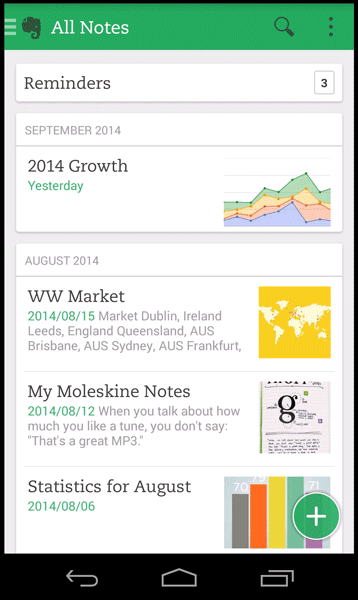
Sometimes it is not easy to create an application, sometimes (and always better better), an application must also be tested. To do this, you can use Appurify , which offers developers a cloud service for testing applications. Appurify allows you to remotely test the application on various real Android devices and get not only a detailed report on the test results, but also screenshots and videos of how the application looks and behaves on devices with different screen sizes and other characteristics. Note : Appurify was recently acquired by Google.
An important reminder is about the possibilities of using the functionality of alpha and beta testing on Google Play, i.e. publishing applications to a pre-selected group of users (usually the most loyal), which allows you to catch all features [bugs] in advance, before publishing to a wide audience.
Do not forget about the possibility of installing the application over-the-air. This term refers to the direct installation of the application from the site, bypassing the store. According to statistics, 40% of users agree to the proposal to install the application - quite a good conversion. Below is an example from fitbit.com , where after logging in with Google account you are invited to download the application to your phone
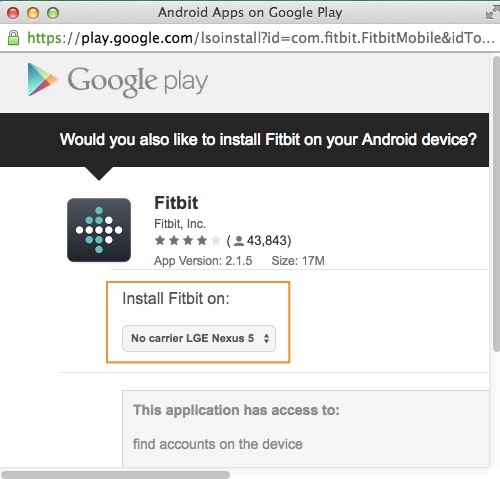
An AdWords re-engagement campaign is a special campaign that aims to automatically redirect the user not to your site, but to a specific section of your installed application.
Also, don't forget to use this feature like Google Search App Indexing . To do this, you need to create deep links inside the application, so that when you search, the user does not just see the application in the results, but during the transition, it’s on the screen where specific information is displayed on request (for more details, see Indexing Android application content is now available to all developers ).
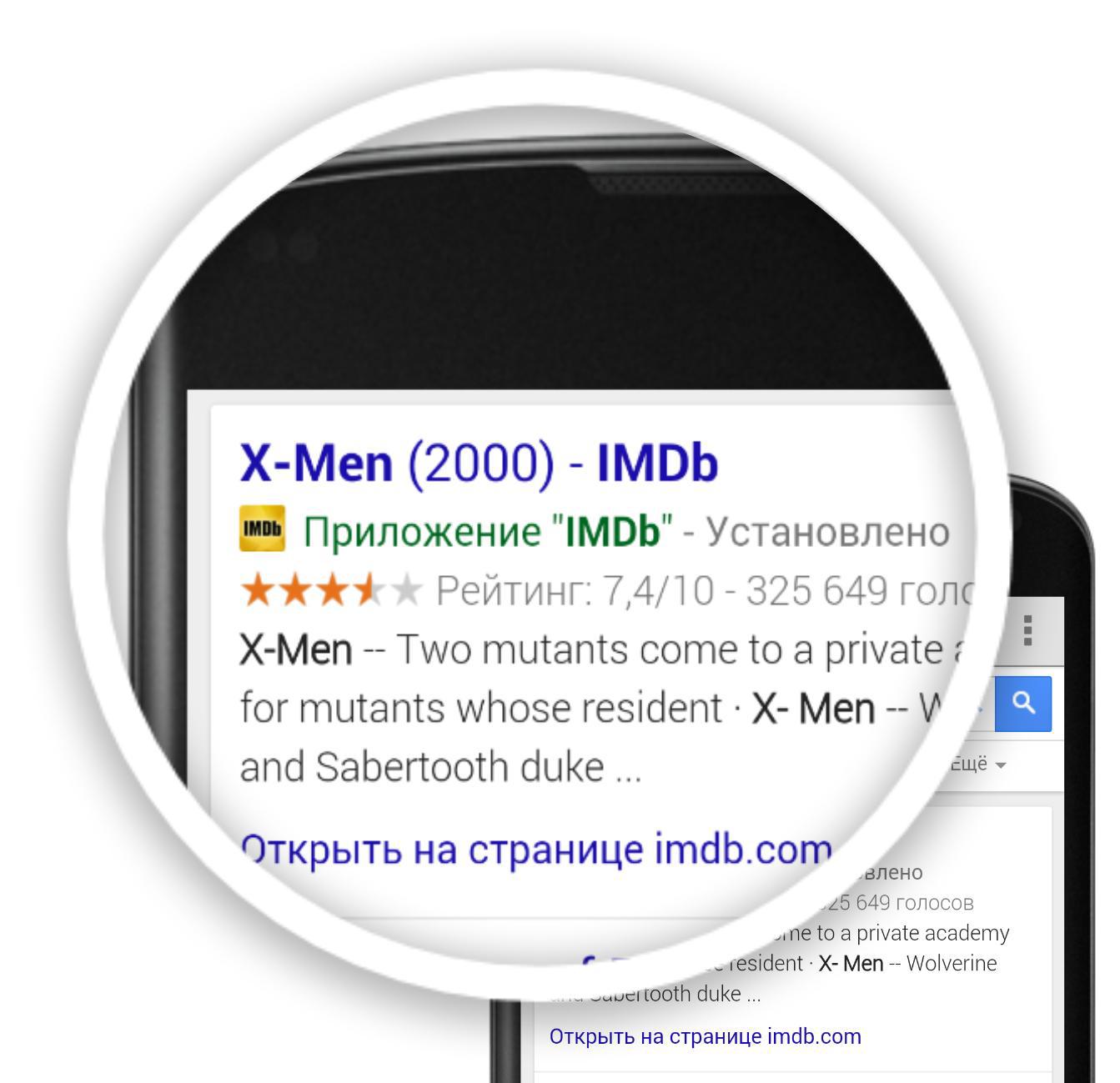
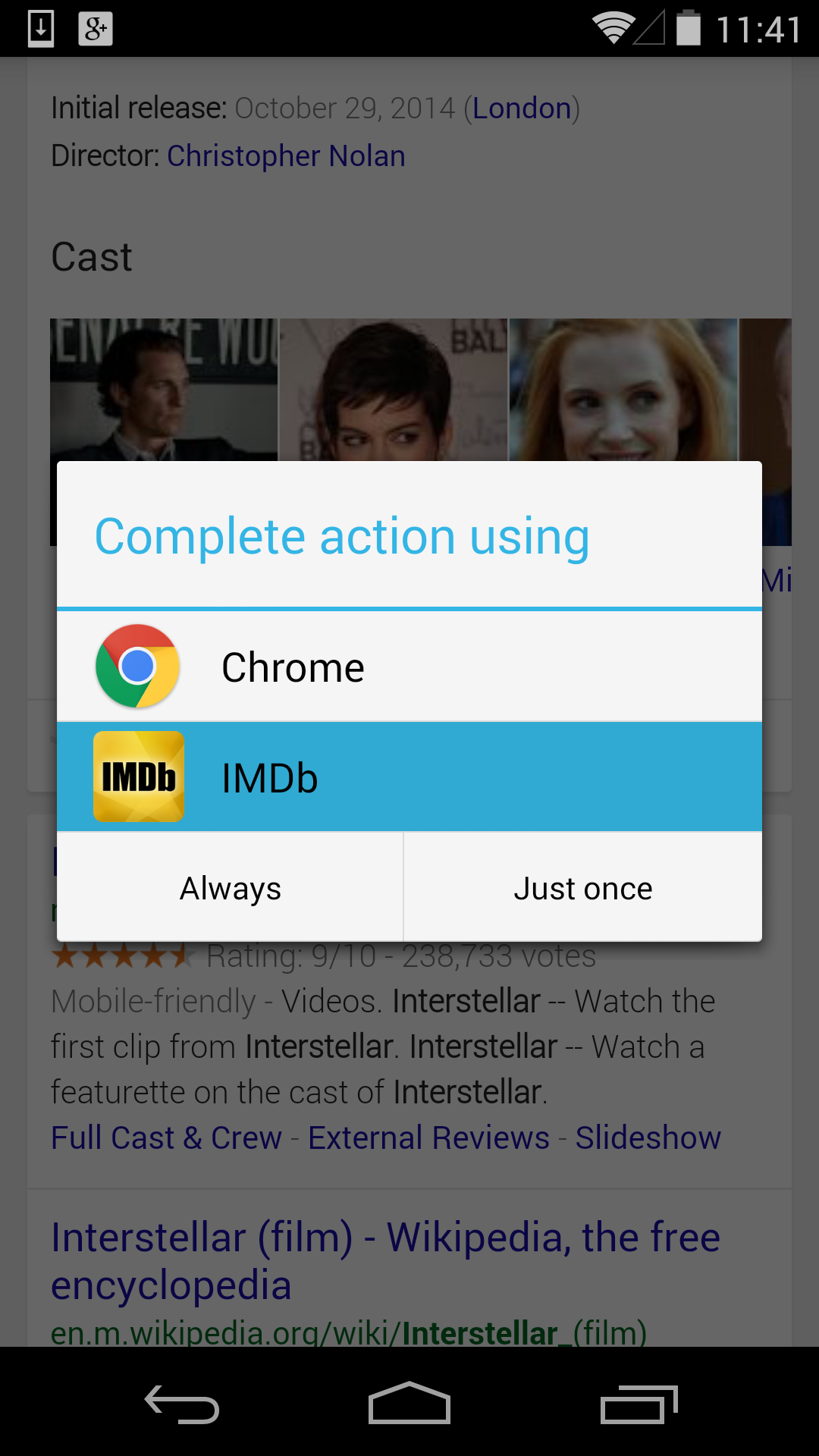
Use the advanced features of the Android ecosystem. For example, it supports Android Wear devices and the function “Ok, Google”, which allows you to control the device or perform some kind of action with voice command. According to the Canalys report, the smart watch market in Q3 2014 shows good growth (compared to Q2 2014, shipments increased by 37% and reached 5 million units) and, in particular, there is a good start for the Android Wear platform. There is a clear tendency that, at the moment, users perceive application support for smart watches and similar gadgets as a nice feature (which, by the way, can clearly increase user engagement and loyalty). It is predicted that it will soon be a must have for any application.
The ecosystem of modern devices is wider than just smart watches and bracelets, yes, yes - talking about good old TVs. Using the Google Cast API, you can add support for Chromecast devices or Android TV, i.e. implement streaming applications to a television screen, which is again positively perceived by users. By the way, applications that implement this functionality are marked with a special Google Play badge - Google Cast Ready.
Anyone who looks into the manual will probably carefully study this section.
There are various options for monetizing the application on Google Play: paid applications; in-app purchases; embedded advertising and subscriptions. Which strategy to choose depends largely on the specific application, its audience and so on. There are a lot of analytical market research available on the issue of application monetization. For example, see the AppAnie report and the IDC Mobile App Advertising and Monetization Trends 2012-2017: The Economics of Free (March 2014). I want to note that sometimes the subscription model is unjustifiably forgotten. For example, the Google Play Music application uses this particular model.
Own, on the topic of monetization and complete my review - successful applications on Google Play.
The Secrets to App Success on Google Play guide was published the other day, which, if translated almost literally, will help your application or game to become successful on Google Play (by the way, you can download a book from Google Play ).

')
Someone will think that this, of course, is great, but is unlikely to become a magic wand for the application. Definitely in the manual there are tips that may be interesting and useful for novice developers writing not only for Android, but also for iOS, Windows or for the Amazon store, etc. Developers who are not the first year in the industry will be able to find recommendations for themselves that apply specifically to Google Play.
Why publish the application on Google Play?
Each developer chooses for himself in which stor and in what time frame to publish the application. But, you see, everyone needs some input to make a decision. According to a recent study by Vision Mobile ( Developer Economics Q3 2014: State of the Developer Nation ), the number of platforms that developers are targeting decreases on average and is 2.2 (previously 2.9), so the choice of platform and storage becomes an increasingly balanced decision.
The facts about Google Play and the Android ecosystem are below:
- The share of Android is 84% in the smartphone market and 66% in the tablet market, while the number of active Android users is close to 1 billion.
- 86% of Android devices are running version 4.0 and higher. This means that many recent device features and APIs can be used in the application.
- New form factors, i.e. The integration of familiar mobile phones, wearable electronics and other devices, such as Android TV, expands user engagement and loyalty.
- The number of installations of applications from Google Play has reached 50 billion.
- Google Play has become the fastest growing gaming platform (between January and June 2014, 100 million new users appeared on Google Play).
- Developers were paid $ 5 billion from June 2013 to June 2014 (an increase of 250% year-on-year).
Material design
Of course, this manual focuses on using Material Design (MD). The MD concept will make it much easier to create applications for various devices and their form factors. Below is an example of an updated design for Evernote.

Appurify
Sometimes it is not easy to create an application, sometimes (and always better better), an application must also be tested. To do this, you can use Appurify , which offers developers a cloud service for testing applications. Appurify allows you to remotely test the application on various real Android devices and get not only a detailed report on the test results, but also screenshots and videos of how the application looks and behaves on devices with different screen sizes and other characteristics. Note : Appurify was recently acquired by Google.
Alpha and Beta Testing
An important reminder is about the possibilities of using the functionality of alpha and beta testing on Google Play, i.e. publishing applications to a pre-selected group of users (usually the most loyal), which allows you to catch all features [bugs] in advance, before publishing to a wide audience.
Installing the over-the-air (OTA) application
Do not forget about the possibility of installing the application over-the-air. This term refers to the direct installation of the application from the site, bypassing the store. According to statistics, 40% of users agree to the proposal to install the application - quite a good conversion. Below is an example from fitbit.com , where after logging in with Google account you are invited to download the application to your phone

AdWords re-engagement campaign and Google Search App Indexing
An AdWords re-engagement campaign is a special campaign that aims to automatically redirect the user not to your site, but to a specific section of your installed application.
Also, don't forget to use this feature like Google Search App Indexing . To do this, you need to create deep links inside the application, so that when you search, the user does not just see the application in the results, but during the transition, it’s on the screen where specific information is displayed on request (for more details, see Indexing Android application content is now available to all developers ).


Android Wear, Ok Google, Chromecast and Android TV
Use the advanced features of the Android ecosystem. For example, it supports Android Wear devices and the function “Ok, Google”, which allows you to control the device or perform some kind of action with voice command. According to the Canalys report, the smart watch market in Q3 2014 shows good growth (compared to Q2 2014, shipments increased by 37% and reached 5 million units) and, in particular, there is a good start for the Android Wear platform. There is a clear tendency that, at the moment, users perceive application support for smart watches and similar gadgets as a nice feature (which, by the way, can clearly increase user engagement and loyalty). It is predicted that it will soon be a must have for any application.
The ecosystem of modern devices is wider than just smart watches and bracelets, yes, yes - talking about good old TVs. Using the Google Cast API, you can add support for Chromecast devices or Android TV, i.e. implement streaming applications to a television screen, which is again positively perceived by users. By the way, applications that implement this functionality are marked with a special Google Play badge - Google Cast Ready.
Application monetization
Anyone who looks into the manual will probably carefully study this section.
There are various options for monetizing the application on Google Play: paid applications; in-app purchases; embedded advertising and subscriptions. Which strategy to choose depends largely on the specific application, its audience and so on. There are a lot of analytical market research available on the issue of application monetization. For example, see the AppAnie report and the IDC Mobile App Advertising and Monetization Trends 2012-2017: The Economics of Free (March 2014). I want to note that sometimes the subscription model is unjustifiably forgotten. For example, the Google Play Music application uses this particular model.
Own, on the topic of monetization and complete my review - successful applications on Google Play.
Source: https://habr.com/ru/post/243257/
All Articles